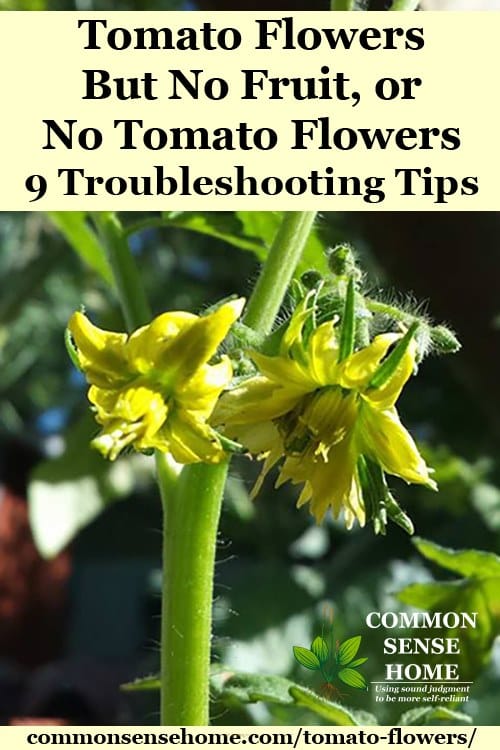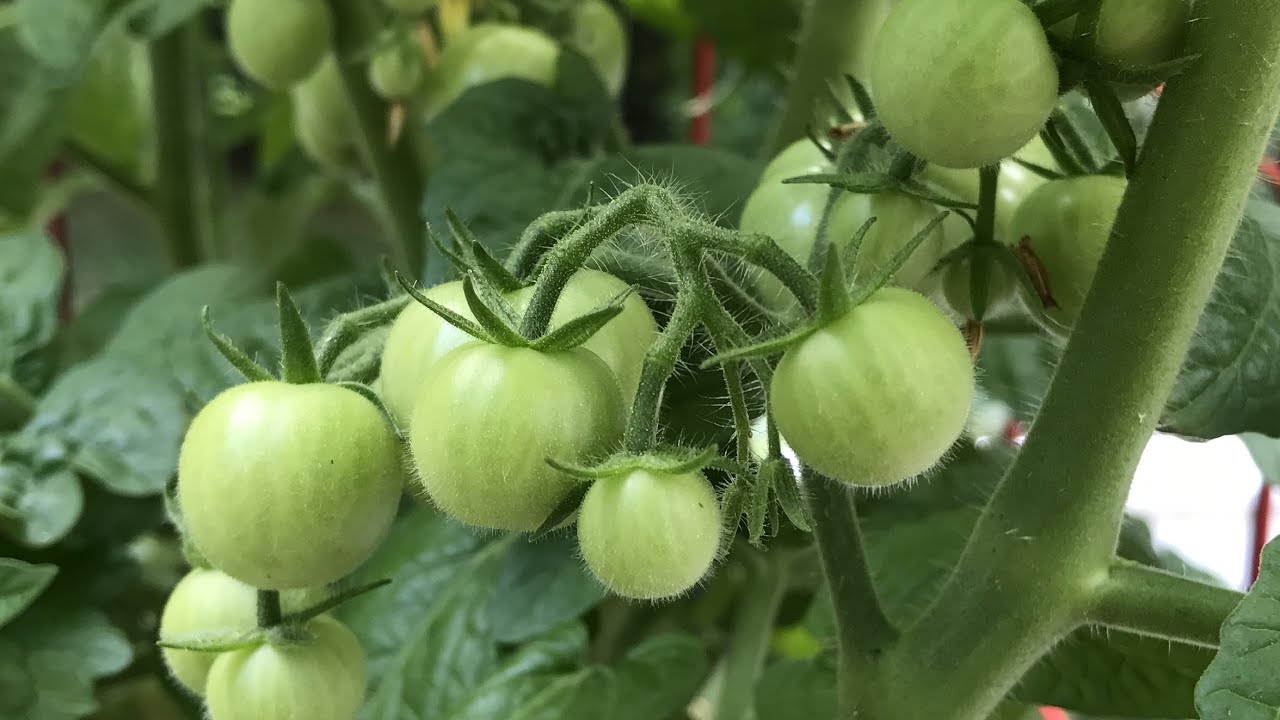To increase flowering in tomatoes, provide adequate sunlight and temperature, maintain the right soil pH, and avoid over-watering. Tomatoes are one of the most popular garden plants, prized for their juicy and flavorful fruits.
However, sometimes, gardeners may find their tomato plants are not producing as many flowers as expected, leading to a poor yield. If you’re facing this issue, it’s essential to understand how to increase flowering in tomatoes. Thankfully, there are several simple yet effective strategies you can employ.

Credit: commonsensehome.com
By ensuring your tomato plants receive adequate sunlight and temperature, maintaining the right soil pH, and avoiding over-watering, you can encourage more flowers to bloom, leading to a bountiful harvest of delicious tomatoes. We will explore these techniques in more detail and help you optimize your tomato-growing experience.
Understanding The Importance Of Flowering In Tomatoes
Understanding the importance of flowering in tomatoes is crucial for increasing their productivity. Flowering directly impacts tomato fruit development, which ultimately determines the yield. Adequate pollination plays a significant role in ensuring successful fruit set and overall plant health. During flowering, the transfer of pollen enables fertilization, resulting in the formation of healthy fruits.
Pollination can occur through various means, including wind, insects, or human intervention. Bees are especially effective pollinators for tomatoes due to their ability to transfer pollen between flowers efficiently. It is important to ensure a sufficient number of flowers and a steady supply of pollen to encourage successful pollination.
This can be facilitated by creating an environment that attracts pollinators, such as planting native flowers nearby. By understanding the impact of flowering on tomato fruit development and the significance of adequate pollination, growers can optimize their practices to increase tomato yields.
Factors Affecting Flowering In Tomatoes
Temperature plays a crucial role in the flowering process of tomatoes. Optimal temperature range of 70-75°F is important to stimulate flowering and fruit production. Extremes in temperature, such as highs above 90°F and lows below 50°F, can negatively impact flowering and affect fruit set. It is crucial to carefully monitor and maintain suitable temperature conditions for the plants to increase flowering.
Light exposure also influences the flowering patterns in tomatoes. They require adequate sunlight for optimum flowering and fruiting. Daily exposure to at least 8-10 hours of direct sunlight ensures the plants receive sufficient light energy for photosynthesis and flower development.
Another crucial factor is maintaining the proper nutrient balance in the soil. Providing a well-balanced fertilizer with appropriate levels of nitrogen, phosphorus, and potassium is essential for optimal flowering. Nutrient deficiencies or imbalances can hinder flower formation and overall plant health.
Tips For Enhancing Flowering In Tomatoes
To increase flowering in tomatoes, there are several key tips you can follow. Start by selecting tomato varieties with high flower production. This will ensure a greater chance of blooms. Next, provide the ideal growing conditions for your tomato plants. Maintain optimal temperature and light levels to encourage flowering.
Additionally, provide proper nutrients and soil amendments to support healthy plant growth. Ensuring sufficient watering and proper drainage is also essential for optimal flowering. To promote pollination in tomato plants, attract pollinators to your garden by planting flowers they are attracted to. You can also use hand pollination techniques if needed. Lastly, manage pests and diseases that can hinder flowering. By following these tips, you can enhance flowering in your tomato plants and increase the chances of a bountiful harvest.
How to Increase Flowering in Tomatoes : Step by Step Guide
Supplementing Flowering In Tomatoes With Growth Enhancers
Blossom drop can be a common issue when it comes to tomato plants, but with the right approach, you can increase flowering in tomatoes and ensure a bountiful harvest. Supplementing flowering in tomatoes with growth enhancers is a promising strategy. Understanding the role of growth enhancers in tomato flowering can help you choose the right options for your plants.
Organic solutions for stimulating flowering in tomatoes include utilizing organic fertilizers and compost. These natural additives provide essential nutrients and promote overall plant health, leading to more flowers. Implementing foliar sprays and botanical extracts can also be effective in encouraging tomato plants to produce more blooms.
For those looking for synthetic options, there are various growth enhancers available in the market. These products are designed to stimulate flower development and increase fruit set. When considering synthetic growth enhancers, it’s important to navigate the options available in the market and choose one that suits your specific needs.
Troubleshooting And Overcoming Flowering Challenges In Tomatoes
Tomatoes are a popular choice among gardeners, but sometimes flowering can be a challenge. Identifying common issues that hinder flowering is the first step towards increasing the bloom. Nutrient deficiencies and imbalances can greatly impact the flowering process. It is crucial to address these through appropriate fertilization and soil amendments.
Furthermore, managing the environmental factors that influence flowering is essential. Providing adequate sunlight, controlling temperature and humidity, and ensuring proper air circulation can significantly enhance flower formation in tomatoes. Identifying and rectifying pest and disease infestations is another crucial aspect that shouldn’t be overlooked. Regular scouting, using organic pest control methods, and practicing proper sanitation measures are effective strategies to combat these issues.
By taking these measures, gardeners can overcome flowering challenges in tomatoes and enjoy bountiful harvests.
Monitoring And Maximizing Fruit Production After Flowering
Monitoring and maximizing fruit production after flowering is crucial for increasing flowering in tomatoes. Implementing effective strategies can ensure successful fruit set and promote a bountiful tomato yield. One key aspect to consider is providing proper care and maintenance during fruit development. This includes regular watering to maintain consistent moisture levels in the soil, as dry conditions can hinder fruit growth. Adequate fertilization is also essential, with the use of a balanced fertilizer rich in phosphorus to support flowering and fruiting.
Harvesting techniques play a pivotal role in maximizing tomato yield. It is advisable to harvest tomatoes when they are fully ripe but still firm. This allows for optimal flavor and texture while minimizing the risk of damage during transportation or storage. When harvesting, it is recommended to use a sharp knife or pruning shears to ensure clean cuts without bruising the fruits. Additionally, removing any diseased or overripe tomatoes from the plant can help redirect energy towards the healthy fruits and promote continued blooming.
Frequently Asked Questions For How To Increase Flowering In Tomatoes
Does Epsom Salt Help Tomatoes Flower?
Yes, Epsom salt can help tomatoes flower by providing essential nutrients and promoting healthy growth.
How Do I Encourage My Tomato Plants To Produce Fruit?
To encourage tomato plants to produce fruit: – Provide adequate sunlight, at least 6-8 hours daily. – Water consistently, ensuring the soil is consistently moist but not soaked. – Apply a balanced fertilizer regularly to provide essential nutrients. – Stake or cage the plants for support, allowing air circulation and reducing disease risk.
What Is The Best Fertilizer For Tomatoes Bloom?
The best fertilizer for tomato blooms is one with a high phosphorus content, promoting healthy flower growth.
What To Do When Tomatoes Start Fruiting?
When tomatoes start fruiting, ensure they receive adequate sunlight, water consistently, and provide support for the plants. Prune, fertilize, and remove any damaged fruit or leaves for optimal growth.
Conclusion
To enhance the flowering in tomatoes, it is essential to provide optimal care and attention. By focusing on key factors such as proper watering, adequate sunlight, and adequate nutrition, you can significantly increase the productivity of your tomato plants. Adequate watering ensures that the plants receive the right amount of moisture, while allowing the soil to dry out between watering sessions.
Maximizing sunlight exposure is another important aspect, as tomatoes thrive in full sun. Providing a minimum of six hours of direct sunlight will encourage healthy growth and blooming. Finally, fertilizing the plants with a balanced blend of nutrients will ensure they have the necessary resources for optimal flowering.
By following these simple yet effective tips, you will be able to enjoy a bounty of beautiful, vibrant tomatoes throughout the growing season.

